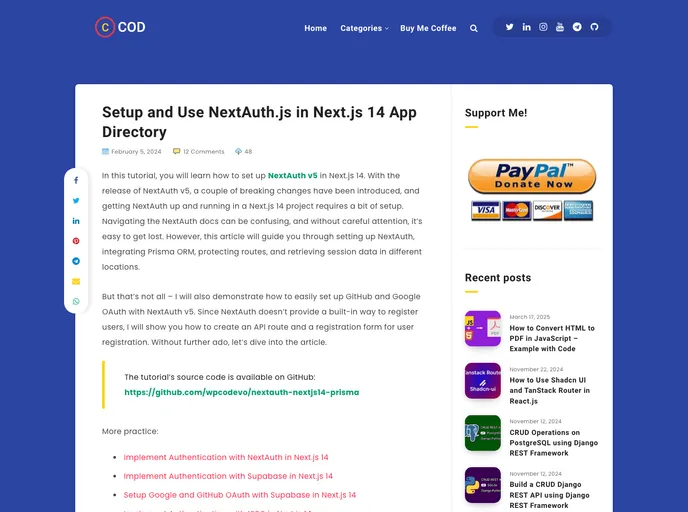Overview
NextAuth.js has emerged as a powerful tool for managing authentication in modern applications, particularly with the recent updates in Next.js 14. The integration of NextAuth v5 offers seamless user authentication through various methods, including credentials, Google, and GitHub OAuth. Setting this up can seem daunting due to the breaking changes introduced, but the benefits of enhanced security and user experience make it worthwhile.
This comprehensive guide not only walks you through the setup process but also provides insights into securing routes and managing user sessions. Whether you’re a seasoned developer or a newcomer, these tutorials break down complex tasks into manageable steps.
Features
Easy Integration: NextAuth.js integrates smoothly with Next.js 14, allowing developers to quickly implement robust authentication systems without extensive configurations.
Support for Multiple Authentication Methods: From traditional email/password credentials to modern OAuth options like Google and GitHub, the flexibility empowers users to choose their preferred login method.
Session Management: The ability to retrieve and manage user session data seamlessly ensures that applications provide a personalized experience tailored to each user.
Route Protection: The inclusion of client-side, server-side, and middleware route protection simplifies the enforcement of access controls across your application.
Prisma ORM for Database Operations: Utilizing Prisma for database interactions simplifies CRUD operations, making it easy to manage user data efficiently.
Custom Registration Pages: The setup allows developers to create custom registration and login pages, ensuring that authentication aligns with the look and feel of their applications.
Real-Time Demo: The tutorials often include real-time demos of authentication flows, enabling developers to visualize the processes and better understand each implementation step.
Community Support and Documentation: Extensive resources and community backing make troubleshooting and learning more accessible while using NextAuth.js in Next.js projects.
